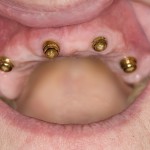
Flapless approaches to implant placement use rotary burs or a tissue punch to gain access to bone without flap elevation. The theory being that the vascular supply and surrounding soft tissue are well preserved. Flapless surgery is however considered to have a number of limitations, e.g. poor control of precise drilling; inability to preserve keratinized gingiva with a tissue punch perforation; and poor ability to assess the implant point of entry. This review assesses the outcomes of flapless implant surgery in the posterior maxilla.
The authors searched the Medline database and hand searched the major dental implant journals for human clinical studies with more than 15 implants. Mean values of survival dates were case weighted.
14 studies were included in the review (6 prospective cohort, 5 retrospective, 1 non-randomised trial and 2 case studies), with follow-up periods ranging from 6 days to 60 months. Six of the studies were short term evaluating intra-operative complications.
The authors reported that implant placement with a flapless technique showed high overall survival rates: –
- 97.01% (95% CI: 90.72–99.0) for prospective studies
- 95.08% (95% CI: 91.0–97.93) for retrospective studies or case series
The average intraoperative complication rate was 6.55% using the flapless procedure.
The authors concluded
The current data obtained from posterior maxilla areas showed that flapless surgery could be a viable and predictable treatment method for implant placement, indicating efficacy and clinical effectiveness.
Comment
For a systematic review at least two electronic databases should be searched, although in this case hand searching of the dental journals would probably have identified the majority of the relevant studies. However, the limited database searching and the restriction to English language studies means that it is possible that relevant studies were not identified. Interestingly, the one trial included in the review (Oh et al 2006) was not considered to a randomised study by these authors although the title and abstract would suggest otherwise. The Oh study is also included in the Cochrane review by Esposito et al 2009 on implant loading times which was restricted to RCTs. Also of interest to the question addressed is the Cochrane review on 1-stage versus 2-stage implant placement.
Links
Doan N, et al. Is flapless implant surgery a viable option in posterior maxilla? A review, Int J Oral Maxillofac Surg (2012): Article in Press
Oh TJ, Shotwell JL, Billy EJ, Wang HL. Effect of flapless implant surgery on soft tissue profile: a randomized controlled clinical trial. J Periodontol. 2006 May; 77(5): 874-82. PubMed PMID: 16671881
Esposito M, Grusovin MG, Achille H, Coulthard P, Worthington HV. Interventions for replacing missing teeth: different times for loading dental implants. Cochrane Database of Systematic Reviews 2009, Issue 1. Art. No.: CD003878. DOI: 10.1002/14651858.CD003878.pub4.
Esposito M, Grusovin MG, Chew YS, Coulthard P, Worthington HV. Interventions for replacing missing teeth: 1- versus 2-stage implant placement. Cochrane Database of Systematic Reviews 2009, Issue 3. Art. No.: CD006698. DOI: 10.1002/14651858.CD006698.pub2.

[…] Dental Elf 20th Aug 2012 […]